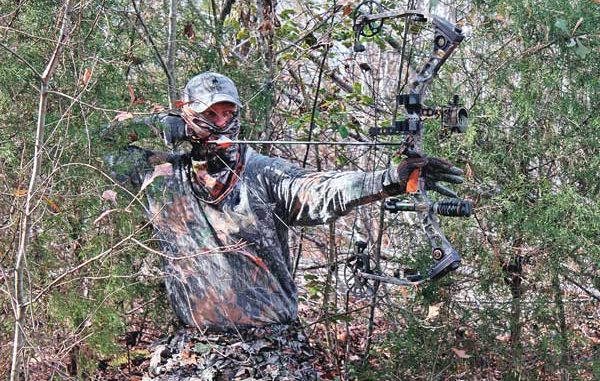
Want to up your chances of bagging a gobbler? Then fake some lessons from this hunter, who gets them close enough to drop with a bow and arrow.
For most turkey hunters, simply bagging a bird with a shotgun is challenge enough.
Not so for Chris Heintze.
He’d rather go with a bow.
“Most people want to go with me and back me up with a shotgun,” Heintze said, chuckling. “A lot of them are inquisitive about what I do, but they still say they’ll just stick with the shotgun.”
That’s precisely what Heintze did, too, during the first several years of his hunting endeavors. But after bagging deer and turkeys via more traditional means, he wanted more.
“I was interested in the challenge of it,” said Heintze, who lives in Clemson and is a graduate of Clemson University.
Challenge? Taking a gobbler with archery equipment might very well qualify as the ultimate test of guile, stealth and patience.
Drawing a turkey close enough to squeeze the trigger on a 35-yard shot is one thing; enticing a turkey to strut within range for an efficient bow kill is quite another.
“It has to rank as one of the most difficult challenges for a hunter, at least in the southeast,” said Richard Morton, a friend of Heintze’s who works as a wildlife biologist for the S.C. Department of Natural Resources. “It’s definitely a way to spice up your hunt.
“There’s so much more to it than just getting a bird in position for a shot. You’ve got to get your bow drawn back, and you’re at ground level. A turkey’s best defense is his eyesight, so you can see how it’s such a hard thing to do.”
Heintze embraces the challenge. He was further lured into the pursuit of turkeys with a bow courtesy of some turkey-rich hunting lands near the school — namely, the Keowee and Fant’s Grove Wildlife Management Areas.
“There were some areas that were archery only, and there were a lot of birds in those areas,” Heintze said. “It was nothing to go out and work three or four different birds in one morning. So I thought they’d be good places to start.”
They were.
Heintze’s first attempt at bagging a bird with a bow came in the spring of 2002, and he was rewarded in short order. Heintze was hunting with Rick DuBose, a friend who had introduced him to archery, and he remembers the hunt as if it had unfolded yesterday.
“Two birds came in front of me, and the first time I tried to draw my bow back, the excitement and my nerves wouldn’t let me do it,” Heintze said. “I finally took a deep breath and was able to shoot. I got the first bird, and the second one kept coming in, so I shot at it and missed. But I was all over myself with excitement.”
When DuBose returned later to pick him up, Heintze casually said, “Just let me go get my bird.”
“He looked at me and said, ‘You’d better find another ride home,’ because I’d gotten one (with a bow) before he had,” Heintze said. “It was a great high — just put it that way.”
The high was great, to be sure, but turkey hunting has a way of humbling the most proficient of hunters, and Heintze was no exception.
“I harvested one that first season and thought I had it all figured out,” he said. “That’s what I was thinking, and it sure didn’t happen. It was three years before I was able to get another one.”
Not that Heintze, 32, didn’t try. A self-professed turkey hunting addict who makes his own custom-made calls during the offseason, he immerses himself in the woods come April.
Heintz is plantation manager at Generostee Creek, a 605-acre hunting plantation in the town of Starr in rural Anderson County, so hunting is on his mind pretty much year-round, he says.
April, however, transforms him into a woodland resident.
“I pretty much turkey hunt every day,” Heintze admits.
And that’s a good thing, because when it comes to bow hunting for turkeys, the shots often are few and far between.
“I probably get three or four opportunities a season to take a shot with my bow,” Heintze said. “And I hunt mostly on public lands, so I’m constantly dealing with other hunters. I’ve seen a decrease in the turkey population also, and that is making it even harder.”
In addition to his considerable time investment, Heintze said his endeavor isn’t the most cost-efficient method of hunting.
“You rarely find your arrow again when you miss a shot, and with the cost of arrows and broadheads, you can be throwing away about $25 every time you shoot and miss,” he said.
But those negatives have done little to dampen Heintze’s enthusiasm. Like many hunters who have gained a considerable amount of experience, the thrill of what might unfold the following morning keeps him setting his alarm for those early wake-up calls.
“The main reason I turkey hunt is for the interaction between you and the bird — that’s what makes it so much fun,” Heintze said. “It’s not really the killing. I like getting a bird as much as the next guy, but it’s the challenge of trying to bring them in to you that keeps me going.
“I have gotten about every kind of remark you can think of. But everyone who knows me knows how fanatical I am about turkey hunting, so the fact that I bow hunt for them doesn’t really surprise them all that much.”

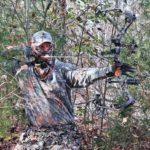
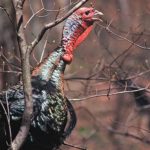
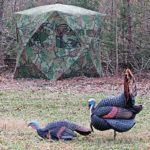
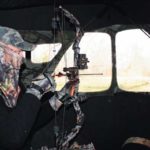
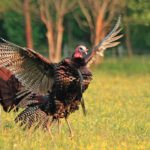


Be the first to comment